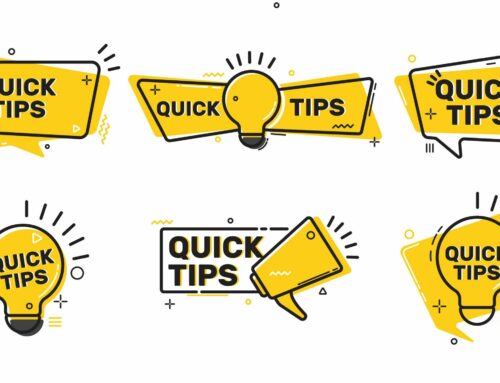Maximizing ROI: How to Create High-Converting Email Campaigns
Email marketing remains one of the most powerful digital marketing channels, offering businesses a direct line to their audience. However, crafting an effective email campaign goes beyond writing a catchy subject line. If you’re looking to maximize your return on investment (ROI), you need to focus on creating high-converting email campaigns that engage, nurture, and convert your subscribers into loyal customers.
In this article, we’ll walk you through the strategies and best practices for building email campaigns that boost conversions and deliver strong ROI.
1. Know Your Audience: The Foundation of Conversion
Before you can craft a successful email campaign, you need to understand who your audience is and what they want. Segmenting your email list allows you to send tailored messages to specific groups of people, increasing relevance and the likelihood of engagement.
Key Actions:
- Demographic Segmentation: Group your subscribers by age, location, gender, and other demographic factors to send more targeted content.
- Behavioral Segmentation: Track how users interact with your emails, website, and products. Segment based on purchase history, engagement level, or past campaign interactions.
- Personalization: Use the data from segmentation to personalize emails with relevant content, offers, and even the recipient’s name.
2. Craft Irresistible Subject Lines
Your subject line is the first impression your email makes, and it directly impacts your open rates. A well-crafted subject line grabs attention and entices the reader to click.
Key Tips:
- Be Clear and Specific: Let the recipient know exactly what they’ll get when they open the email. For example, “Exclusive 20% Discount Just for You” is clear and tempting.
- Use Action Words: Words like “Discover,” “Learn,” or “Get” prompt action.
- Create Urgency: Subject lines that highlight limited-time offers or create a sense of urgency often drive higher open rates. Examples include “Hurry, Offer Ends Today!” or “Only 3 Days Left to Save.”
3. Focus on Mobile Optimization
More than half of all emails are opened on mobile devices. If your emails aren’t optimized for mobile, you risk losing a significant portion of potential leads. Ensuring a seamless mobile experience is critical to boosting your conversions.
Key Mobile Optimization Strategies:
- Responsive Design: Use email templates that automatically adjust to fit any screen size, whether it’s a smartphone, tablet, or desktop.
- Concise Copy: Keep your email text short and to the point. Mobile users have less screen space and shorter attention spans.
- Easy-to-Tap Buttons: Make your call-to-action (CTA) buttons large enough to tap easily, and ensure they’re placed prominently in the email.
4. Write Persuasive and Value-Driven Content
The body of your email should deliver on the promise of the subject line, offering value and encouraging action. Whether your goal is to inform, sell, or promote, your content should be concise and persuasive.
Content Best Practices:
- Lead with a Benefit: Focus on what the reader will gain. Instead of saying, “We’re offering 20% off,” say, “Save 20% on your favorite products today.”
- Keep It Skimmable: Use bullet points, short paragraphs, and clear headings to make the email easy to read at a glance.
- Use a Strong CTA: Your CTA should clearly tell the reader what to do next. Avoid vague phrases like “Click Here” and instead use action-oriented phrases like “Shop Now,” “Get Started,” or “Claim Your Discount.”
5. A/B Test Everything
A/B testing allows you to experiment with different elements of your email campaigns to see what works best. By testing subject lines, content formats, CTA placements, and even email sending times, you can gather valuable data that informs future campaigns.
What to Test:
- Subject Lines: Try different wording, lengths, or styles (e.g., questions vs. statements) to see which ones drive higher open rates.
- Email Copy: Test the length of your content, the tone of your message, and even different offers to see which drives more engagement.
- Call-to-Action Buttons: Experiment with the color, size, placement, and wording of your CTA buttons to optimize for clicks.
- Sending Times: Test different days and times to determine when your audience is most likely to engage with your emails.
6. Monitor Your Metrics and Refine
To truly maximize ROI, continuously track the performance of your email campaigns. Focus on key metrics such as open rates, click-through rates (CTR), conversion rates, and bounce rates. This data helps you understand what’s working and where there’s room for improvement.
Key Metrics to Watch:
- Open Rate: Indicates the percentage of recipients who opened your email. Low open rates may suggest issues with your subject line or timing.
- Click-Through Rate: The percentage of recipients who clicked on links in your email. A low CTR often points to an unengaging email body or weak CTA.
- Conversion Rate: The percentage of recipients who completed the desired action (e.g., made a purchase, signed up). This is the ultimate measure of campaign success.
- Unsubscribe Rate: A high unsubscribe rate may indicate that your content is not aligned with your audience’s interests or that you’re emailing too frequently.
7. Automate and Scale Your Campaigns
Email automation tools can help streamline your efforts, allowing you to nurture leads, send timely follow-ups, and offer personalized experiences at scale. Set up automated workflows to trigger emails based on user behavior, such as welcome emails, abandoned cart reminders, or birthday promotions.
Automation Tips:
- Welcome Series: Introduce new subscribers to your brand with a series of automated welcome emails.
- Drip Campaigns: Send a series of educational or promotional emails over a set period to nurture leads.
- Cart Abandonment Emails: Automatically follow up with users who leave items in their online shopping cart without completing a purchase.
Final Thoughts
A high-converting email campaign is the result of a strategic approach that combines audience understanding, personalization, optimization, and constant testing. By implementing these best practices, you can boost your email marketing performance and achieve the maximum return on your investment. Remember, the key to success lies in delivering value to your subscribers, making their journey through your emails smooth, engaging, and action-oriented.
By continually refining your campaigns and responding to data-driven insights, your email marketing efforts will not only drive higher conversions but also build long-term relationships with your audience.
By following these strategies, you’ll be on your way to creating email campaigns that consistently convert and drive strong ROI for your business.
Related Posts




